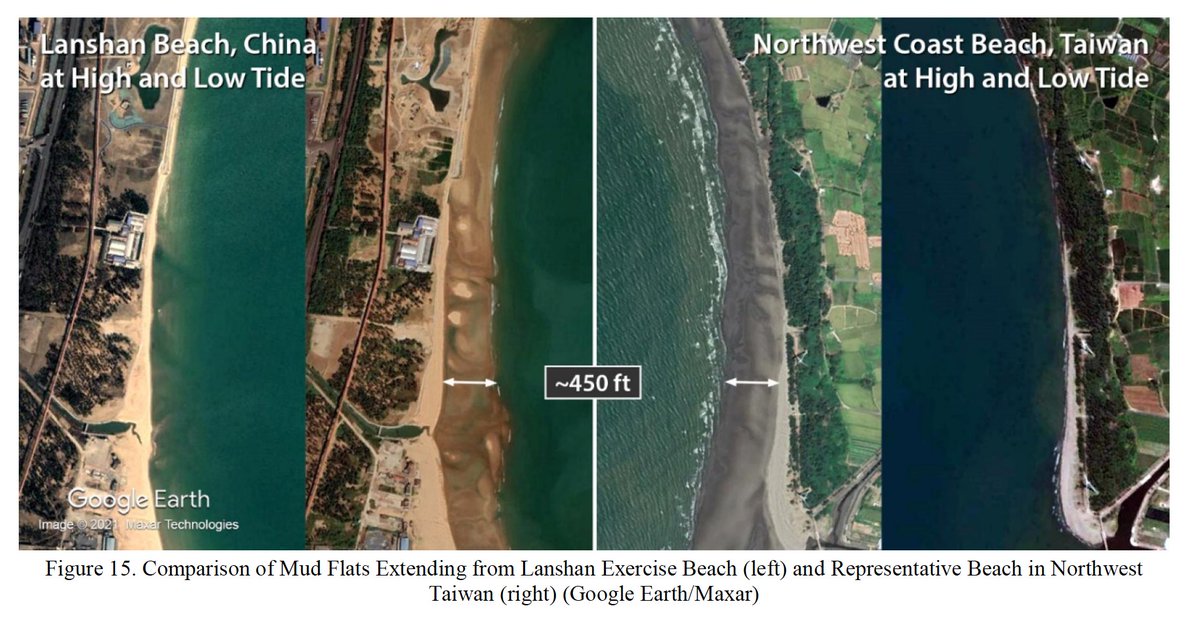
I have been waiting for months for this incredibly impressive demonstration of OSINT to come out - ever since I saw it presented at a @ChinaMaritime conference earlier this year.
https://twitter.com/ChinaMaritime/status/1455250087123329025
The author (Mike Dahm) used AIS, commercial imagery, and other sources to weave an incredibly detailed picture of key amphibious assault exercises in 2020 and 2021 where the PLA experimented with the use of numerous civilian ships to supplement its organic sealift capacity. 







Key takeaways IMO: the PLA and its reserve civilian fleet probably can't yet support a large-scale invasion of Taiwan, and the ships used so far to practice are a select cadre. But this capacity could expand rapidly after capabilities are formalized & expanded to other ships. 

Another key takeaway: the PLA's ingenious floating pier systems could be used to cross Taiwanese coastal mud flats previously assessed as unsuitable for landings. If you've read many previous assessments of where/when the PLA could invade, you'll recognize this as a big deal. 👀 



IMO the conclusions are spot-on: China probably can't do this now, but we shouldn't "underestimate the ingenuity and tenacity of the PLA", and efficiency may not be needed when a whole-of-society mobilization is behind the effort. And the PLA probably just getting started here. 





And of course, the title, "Chinese Ferry Tales" is just...
• • •
Missing some Tweet in this thread? You can try to
force a refresh











